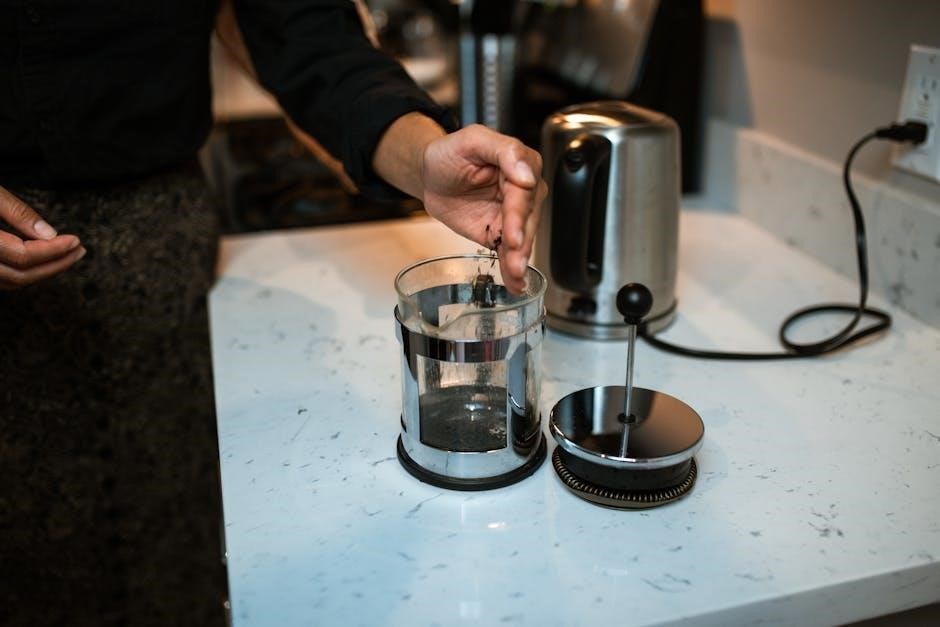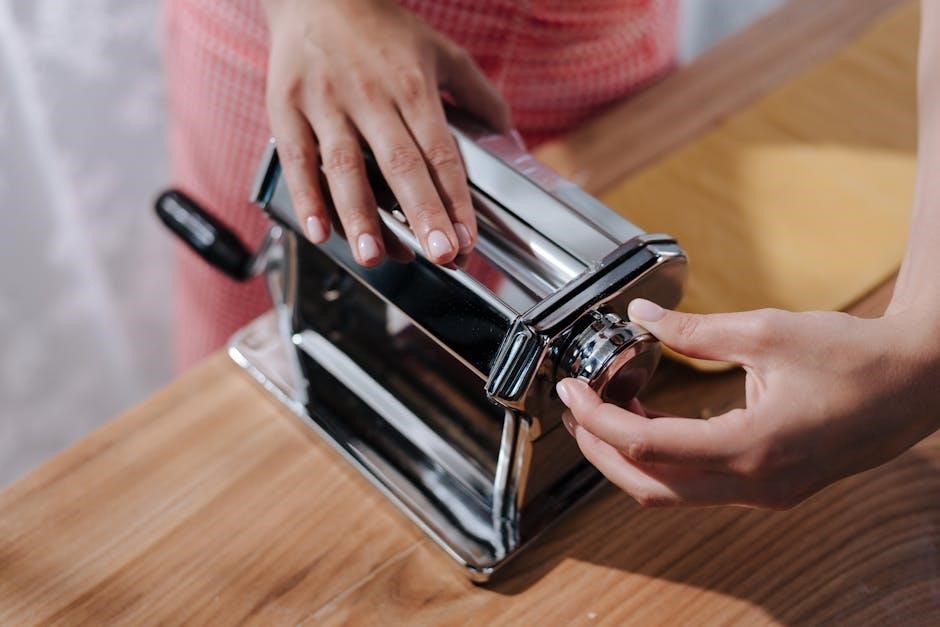Manual Cell Counter: A Comprehensive Guide
This guide explores manual cell counting, a fundamental technique in laboratories.
It details the process using a hemocytometer and microscope, focusing on
accuracy and proper technique. We delve into its principles, advantages,
and limitations in modern research and diagnostics.
Manual cell counting, utilizing a hemocytometer and microscope, remains a
cornerstone technique for determining cell concentration in liquid samples.
Despite the emergence of automated cell counters, the hands-on approach of
manual counting retains significance. This method offers accessibility and
affordability, requiring only basic laboratory equipment. Its enduring popularity
stems from its simplicity and the direct control it provides over the counting
process. Manual cell counting serves as a standard in many labs, providing
essential data for research and quality control applications.
Principles of Manual Cell Counting
Manual cell counting relies on directly visualizing and enumerating cells within
a defined volume. A hemocytometer, a specialized slide with a precision grid,
is used to create a known volume. Cells within this grid are counted under a
microscope. The principle is based on calculating cell concentration by
determining the number of cells per unit volume. Dilution factors must be
considered to obtain the original concentration. Cell viability can be assessed
using dyes like Trypan Blue, which selectively stain dead cells, differentiating
them from live cells under microscopic observation.
Hemocytometer Usage
The hemocytometer, typically a Neubauer chamber, facilitates manual cell
counting. It features a precisely etched grid of known dimensions, creating
defined volumes for accurate cell enumeration. Before loading, ensure the
hemocytometer and coverslip are clean. Carefully apply the cell suspension to
the chamber, avoiding air bubbles. Allow the cells to settle briefly before
counting. Count cells within specific grid squares, following a consistent
pattern to avoid double-counting or omissions. Proper technique ensures
reliable and reproducible cell concentration measurements under a microscope,
crucial for various biological applications.

Materials Required for Manual Cell Counting
To perform manual cell counting successfully, several key materials are
essential. Primarily, you’ll need a hemocytometer, typically a Neubauer
chamber, which provides a precise grid for cell enumeration. A microscope,
preferably with phase contrast capabilities, is crucial for visualizing and
counting the cells. Furthermore, a cell suspension containing the cells of
interest is necessary. Additionally, Trypan blue or another viability dye
may be required to distinguish between live and dead cells. Pipettes,
microcentrifuge tubes, and a cell culture medium are needed for sample
preparation and dilution.
Hemocytometer and Microscope
The hemocytometer, often the Neubauer chamber, is a specialized slide with
etched grids for accurate cell counting. Its defined volume allows for
determining cell concentration. Paired with a microscope, cells within the
hemocytometer’s grid are visualized and counted. The microscope’s
magnification is essential for distinguishing cells, and phase contrast
enhances clarity. Proper use of both tools ensures accurate cell enumeration.
The hemocytometer must be clean, and the coverslip properly positioned for
accurate volume control. The microscope needs appropriate illumination and
objective lens selection for optimal cell visualization during the counting
process.
Cell Suspension Preparation
Creating a homogenous single-cell suspension is critical for accurate manual
cell counting. Aggregated cells lead to underestimation. Techniques like
trypsinization or accutase are used to dissociate cells. Gentle pipetting
ensures uniformity without damaging cells. Filtration removes debris. Cell
concentration can be adjusted through dilution with appropriate media or
buffer. Viability dyes, such as Trypan Blue, may be added at this stage to
distinguish live and dead cells. Ensure the cell suspension is free of
bubbles before loading onto the hemocytometer. The quality of the cell
suspension directly impacts the reliability of the final cell count.
Procedure for Manual Cell Counting
Manual cell counting involves several key steps to ensure accuracy. First,
prepare a representative cell suspension. This may involve dilution and
staining. Next, carefully load the hemocytometer with the cell suspension,
avoiding air bubbles. Allow cells to settle before placing the hemocytometer
under a microscope. Systematically count cells within defined grids, following
established counting rules. Record the cell counts from multiple grids.
Finally, perform calculations to determine cell concentration and viability.
Proper technique and attention to detail are crucial for obtaining reliable
results in manual cell counting. This methodical approach minimizes errors.
Sample Preparation and Dilution
Effective sample preparation is essential for accurate manual cell counting.
Start by ensuring a homogenous cell suspension through gentle mixing. If
needed, dilute the sample to achieve an optimal cell concentration for
counting. Too many cells make counting difficult, while too few increase
sampling error. Use appropriate diluents, considering cell type and
experimental requirements. Staining with dyes like Trypan Blue may be
necessary to distinguish between live and dead cells. Accurate dilution
factors must be recorded and used in subsequent calculations. Proper sample
preparation minimizes clumping and ensures representative cell distribution
for reliable counting;
Loading the Hemocytometer
Loading the hemocytometer requires precision to ensure accurate cell counts.
First, carefully place the coverslip onto the hemocytometer, ensuring proper
adherence to create a defined volume. Using a pipette, gently introduce a
small volume of the prepared cell suspension into the chamber, allowing
capillary action to fill it. Avoid overfilling, which can lead to inaccurate
volumes and cell distribution. Allow a few minutes for the cells to settle
before counting. Ensure that no air bubbles are present within the counting
grid, as they can obstruct the view and compromise the count. Careful
loading prevents uneven cell distribution.
Counting Cells Under the Microscope
With the hemocytometer loaded, the next step is counting cells under the
microscope. Begin by focusing on the grid lines using the appropriate
magnification, typically 10x or 20x. Establish a consistent counting rule to
avoid bias, such as only counting cells touching the top and left lines of
each square. Systematically count cells within designated squares, moving
across the grid to ensure representative sampling. Record the number of cells
in each square separately. Be mindful of cell morphology and distinguish
between live and dead cells if using a viability stain like Trypan Blue.
Avoid counting debris or particles. Accurate counting ensures reliable data.
Calculations and Data Analysis in Manual Cell Counting
Once cell counts are obtained from the hemocytometer, calculations are
necessary to determine the original cell concentration. This involves
accounting for the dilution factor used during sample preparation and the
volume of the hemocytometer counting chamber. Accurate calculations are
crucial for reliable results. Data analysis may also include calculating cell
viability if a dye such as Trypan Blue was used. Statistical analysis, such
as calculating the mean and standard deviation from multiple counts, can
further improve the accuracy and reliability of the cell count data. Proper
data analysis is essential for drawing meaningful conclusions from experiments.
Cell Concentration Calculation
Determining cell concentration after manual counting requires a specific
formula. First, calculate the average cell count per square on the
hemocytometer grid. Then, consider the dilution factor applied during sample
preparation; multiply the average count by this factor. Next, account for the
hemocytometer chamber’s volume by dividing by the chamber’s volume. This
adjusted count gives the cells per milliliter (cells/mL). Ensure accurate
dilution measurements for a precise final concentration. For instance, if a
1:10 dilution was used, multiply the counted cells by ten to obtain the
original concentration. This calculation provides the cell concentration.
Viability Assessment with Trypan Blue
Trypan blue is a dye used to assess cell viability during manual cell
counting. Live cells with intact membranes exclude the dye, appearing
clear. Dead cells with compromised membranes allow the dye to enter, staining
them blue. Mix the cell suspension with trypan blue and load it onto the
hemocytometer. Count both the total number of cells and the number of blue
cells. Divide the number of unstained cells by the total number of cells to
determine the percentage of viable cells. Accurate viability assessment is
crucial for various cell-based assays and applications. This method allows
distinguishing between live and dead cells.
Advantages of Manual Cell Counting

Manual cell counting, despite the emergence of automated systems, retains
several advantages. Its cost-effectiveness is a significant draw, requiring
only a hemocytometer and microscope, readily available in most labs. The
technique’s accessibility makes it invaluable in resource-limited settings.
It provides a hands-on approach, beneficial for training purposes. Manual
counting offers flexibility, allowing visual confirmation of cell morphology.
It also does not rely on complex algorithms or specialized equipment. This
method remains a reliable option. It is particularly useful when automated
counters are unavailable or when dealing with unusual cell types or samples
that may not be accurately processed by automated systems.
Cost-Effectiveness
Manual cell counting stands out for its affordability. The primary equipment
needed, a hemocytometer and a standard light microscope, represents a minimal
investment, especially considering that many laboratories already possess
these tools. Unlike automated cell counters, there are no recurring costs
associated with expensive reagents, specialized disposables, or maintenance
contracts. The reduced financial burden makes it particularly attractive for
educational institutions, research facilities with limited budgets, and
laboratories in developing countries. The low cost of the materials makes
manual cell counting a widely accessible and practical option. This ensures
resource optimization in cell counting procedures.
Accessibility

Beyond cost, manual cell counting boasts remarkable accessibility. The
technique requires minimal specialized training, making it easily adaptable
for researchers, students, and laboratory technicians. Hemocytometers and
microscopes are standard equipment in most biological and medical
laboratories, removing the need for specialized instrumentation. The
simplicity of the method means cell counts can be performed virtually
anywhere, even in resource-limited settings, without reliance on complex
infrastructure or proprietary software. This ease of use contributes to its
widespread adoption, ensuring a readily available method for cell
enumeration across diverse research and clinical contexts. It is convenient
and easily applicable.
Disadvantages of Manual Cell Counting
Despite its advantages, manual cell counting presents notable drawbacks. The
process is inherently time-consuming, limiting the number of samples that can
be processed efficiently. It is also prone to subjectivity, as cell
identification and counting rely on individual interpretation, leading to
variability between users. This subjectivity can impact the accuracy and
reproducibility of results, particularly when dealing with complex samples or
users with varying levels of experience. The manual nature of the technique
also increases the risk of human error, further compromising data integrity.
These limitations highlight the need for careful technique and quality
control measures.
Time Consumption and Throughput
Manual cell counting, using a hemocytometer, is a labor-intensive process,
significantly impacting throughput. Preparing samples, loading the
hemocytometer, and meticulously counting cells under a microscope all demand
considerable time. This makes it impractical for high-volume applications or
when rapid results are needed. The time investment per sample limits the
number of experiments or analyses that can be conducted within a given
timeframe. In research settings requiring large datasets or clinical
diagnostics with urgent demands, the slow pace of manual counting can be a
major bottleneck, hindering progress and potentially delaying critical
decisions.
Subjectivity and Variability
Manual cell counting is inherently susceptible to subjective interpretation,
leading to variability in results. Distinguishing between live and dead cells,
or differentiating cells from debris, relies on the operator’s judgment, which
can vary between individuals. Counting rules and strategies can also differ,
further contributing to inconsistencies. These subjective elements introduce a
degree of uncertainty that can compromise the reliability and reproducibility
of the data. Such variability becomes particularly problematic when comparing
results across different operators or laboratories, making it difficult to
draw firm conclusions or establish standardized protocols. This limitation
underscores the need for careful training and rigorous quality control measures.
Comparison with Automated Cell Counters
Automated cell counters offer significant advantages over manual methods in
terms of speed, throughput, and objectivity. While manual counting requires
meticulous effort and is prone to human error, automated systems provide
rapid and consistent results. These instruments utilize image analysis or
electrical impedance to count cells, minimizing subjective interpretation.
Automated counters can process multiple samples quickly, making them suitable
for high-throughput applications. However, manual counting remains valuable due
to its cost-effectiveness and accessibility. The choice between manual and
automated methods depends on the specific needs and resources of the
laboratory, balancing accuracy, efficiency, and budget considerations.
Accuracy and Precision
Automated cell counters generally exhibit higher accuracy and precision compared
to manual methods. Manual cell counting is susceptible to variability due to
subjective interpretation and human error. Automated counters utilize
algorithms and consistent detection methods, reducing the potential for
inconsistencies. Vision-based automated counters, which mimic manual counting
principles, achieve results similar to the “gold standard” but with greater
speed and repeatability. Factors such as sample preparation and instrument
calibration also affect accuracy. While automated counters offer superior
precision, manual counting, when performed carefully and with proper
technique, can provide acceptable accuracy for certain applications,
especially when resources are limited or high throughput is not required.
Speed and Automation
Automated cell counters significantly outperform manual methods in terms of
speed and throughput. Manual cell counting is a time-consuming process,
requiring individual assessment of cells under a microscope. Automation
allows for rapid processing of multiple samples, greatly reducing hands-on
time. Automated systems can count cells in seconds, whereas manual counting
may take several minutes per sample. The integration of automation also
minimizes labor costs and frees up personnel for other tasks. Furthermore,
automated counters can be programmed to run unattended, enabling continuous
operation and higher overall productivity compared to labor-intensive manual
cell counting.
Error Sources and Troubleshooting in Manual Cell Counting
Manual cell counting, while accessible, is prone to errors. Inconsistent
sample preparation, improper hemocytometer loading, and subjective cell
identification contribute to variability. Uneven cell distribution in the
sample and counting cells outside defined gridlines introduce inaccuracies.
To troubleshoot, ensure thorough mixing and uniform dilution of the sample.
Use proper pipetting techniques and calibrate equipment regularly; Establish
clear criteria for cell identification to minimize subjective bias. Repeat
counts multiple times and calculate the average to improve accuracy.
Regularly inspect hemocytometers for cleanliness and grid integrity. Proper
training and adherence to standardized protocols are essential to reduce
errors.
Educational Purposes
Common Counting Errors

Several common errors arise during manual cell counting. Inadequate mixing leads
to uneven cell distribution, skewing results. Misidentification of cells or
debris as cells inflates counts. Counting cells outside the designated grid
area introduces inaccuracies. Failing to account for dilution factors
compromises concentration calculations. Subjective interpretation of live/dead
cells, especially with dyes like Trypan Blue, varies between users. Inconsistent
counting rules, such as including cells touching borderlines on all sides,
affects reproducibility. Using a dirty or damaged hemocytometer introduces
artifacts. Insufficient sample volume or improper loading creates uneven
distribution, affecting accuracy. These errors impact data reliability.
